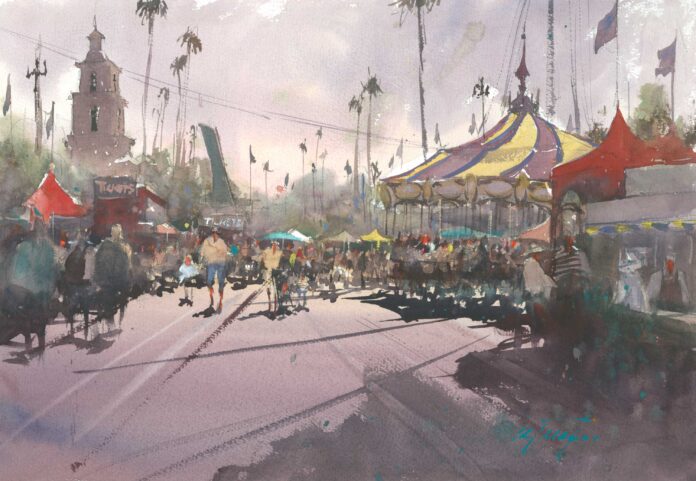
An interview with Keiko Tanabe on why she paints en plein air with watercolor, her journey to becoming a professional artist, and more. The following is part of a series featuring a leader in the art community who will be joining us on the faculty of Watercolor Live, a virtual art conference taking place January 24-26, 2024.
Keiko Tanabe on Plein Air Watercolor & More
Kelly Kane: You started your career in cross-cultural communication and international marketing, but eventually gave all that up to paint. What put you on the path to becoming a full-time artist?
Keiko Tanabe: From the time I was little, I can remember drawing. I didn’t really know any working artists around me growing up, so I never considered being an artist myself. When I contemplated my future and a career, I always had the thought in the back of my mind that someday I’d take a class and learn how to paint. Maybe when I retire, I thought.
When I had a child (he’s 22 now, so that was quite some time ago), I wanted him to learn how to draw, because I had loved it so much when I was young. Every weekend we would go to the zoo or the park; I always carried a sketchbook with me, and we would doodle together. I was reminded of how much I enjoyed drawing and sketching. So while at first, I was doing it for him, I started doing it more for myself.
Eventually, I decided to get serious about it, and I took a drawing course — not at an art school, just a community class. The teacher said I was really talented, which took me by surprise. I had only intended to take one semester, as my job was really demanding. I told her that my real desire was to learn how to paint. She said the first step was to pick a medium, and since I had virtually no experience with painting media, I tried everything. In the end, I settled on watercolor.
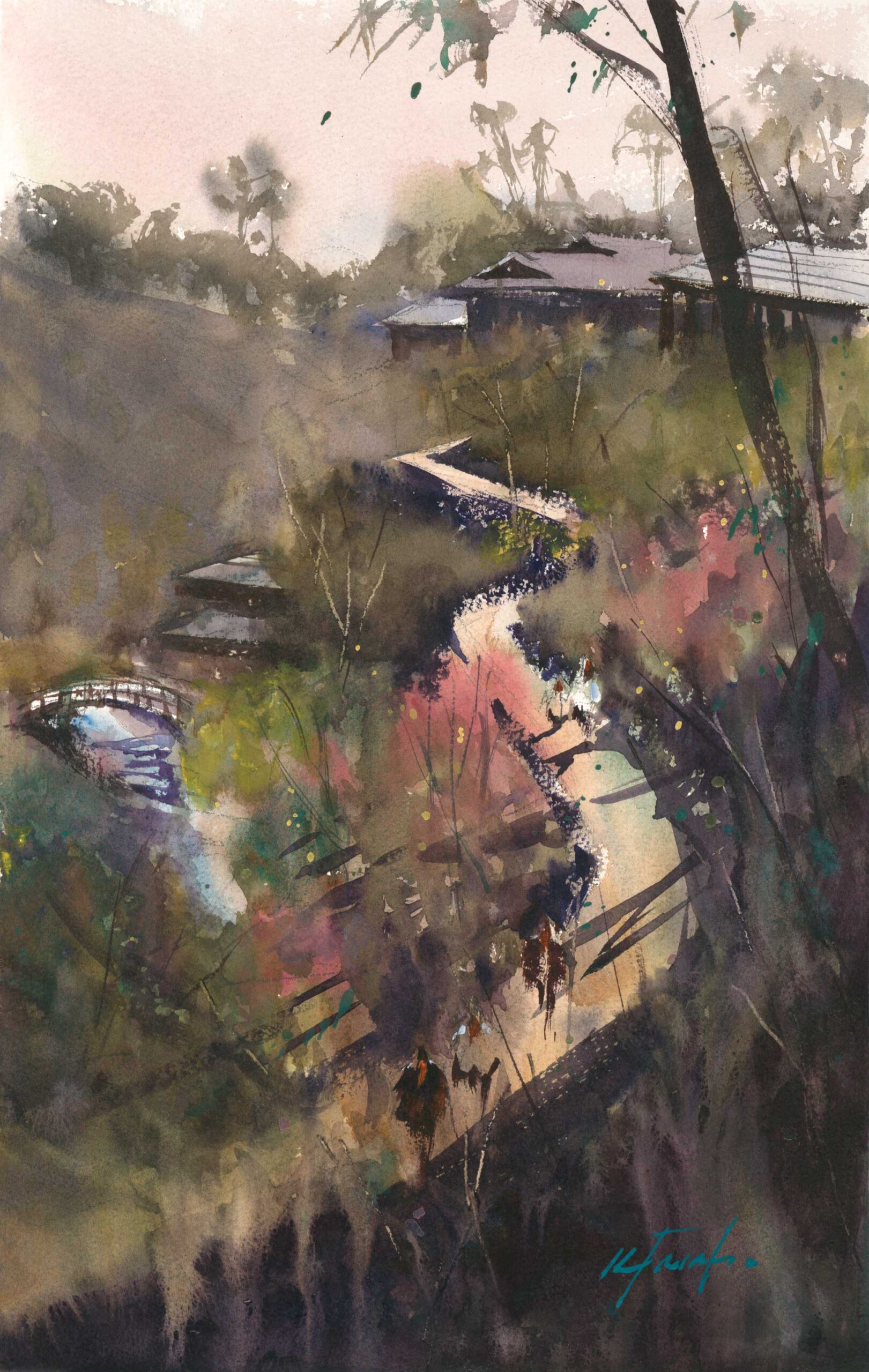
Kane: What was it about the medium that appealed to you?
Tanabe: I chose watercolor not because I liked it; in fact, I thought it was very, very difficult. With oil or colored pencil, I wasn’t very good, but I sort of had the idea; I would have an image in my head that I wanted to create, and I could at least get that image across. With watercolor, I just made a mess; the image did not appear on the paper. I wanted to stick with watercolor to see if I could get the hang of it.
Kane: So it presented a challenge, and you liked that?
Tanabe: I have that sort of personality. I don’t like to be defeated.
Kane: What came next?
Tanabe: I stuck with my local teacher and started to learn the basics of watercolor. At the time, I still considered it all just a hobby. This would have been a couple of years before 2005, because 2005 was the year I quit my job to paint full-time. I had come to a crossroads in my career, and it was either continue in international marketing or get serious about my art. I chose the latter.
That was also the year I took a workshop with Alvaro Castagnet. I didn’t know anything about who was who in watercolor, but I was flipping through an art magazine and came across a piece by Alvaro and loved it. He was going to be teaching a workshop in Georgia, so my son and I flew out. I was a single mom and didn’t have anyone to watch after him, so I just brought him with me. It was a plein air class, and my son would go out with us and work alongside me.
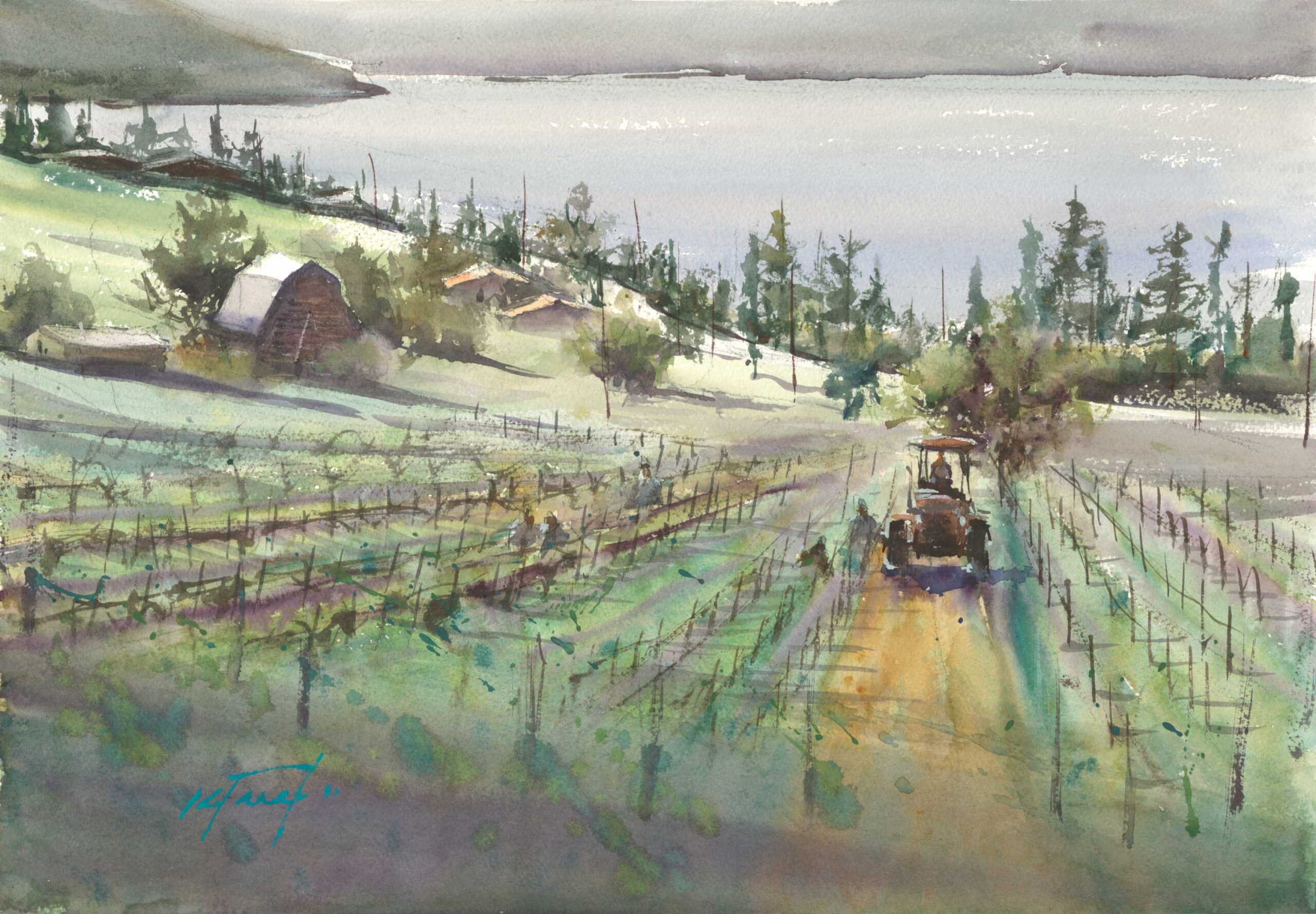
Kane: When you’re working outdoors, is your goal to complete a painting on-site, or do you ever bring a piece inside to finish it?
Tanabe: I try to always finish outside, but if it’s rainy and the paint won’t dry, I may put finishing touches on at home.
Kane: What do you find is the greatest advantage to painting directly from nature?
Tanabe: For landscape painters in particular, it’s the best way to capture life. Working from a photo may be easier, but the subject doesn’t move. Outdoors, the subject and the light are constantly changing. It’s challenging, but the experience is so important for learning how to observe and understand. I sometimes see students pull out their reference photo at the start of class and right away begin copying, without really thinking.
Also, you develop a sense of urgency. Because everything changes so quickly, you have to keep going, otherwise you’re lost. That’s good training, I think. You have to make the best decision possible, as quickly as possible, so that you can stay in the moment.
I know every painter is different, but if I worked from photos, I would think, “Well, I can paint anytime.” I would stop and have a cup of coffee. I would just be lazy. When I’m outside, working with a time limit, it keeps me focused.
Note: Keiko Tanabe can help you overcome any obstacles to painting outdoors with watercolor – check out her art video workshop, “Painting Sunlight,” here. AND, learn from Keiko with the watercolor community during our next Watercolor Live online art conference!
Continue reading …
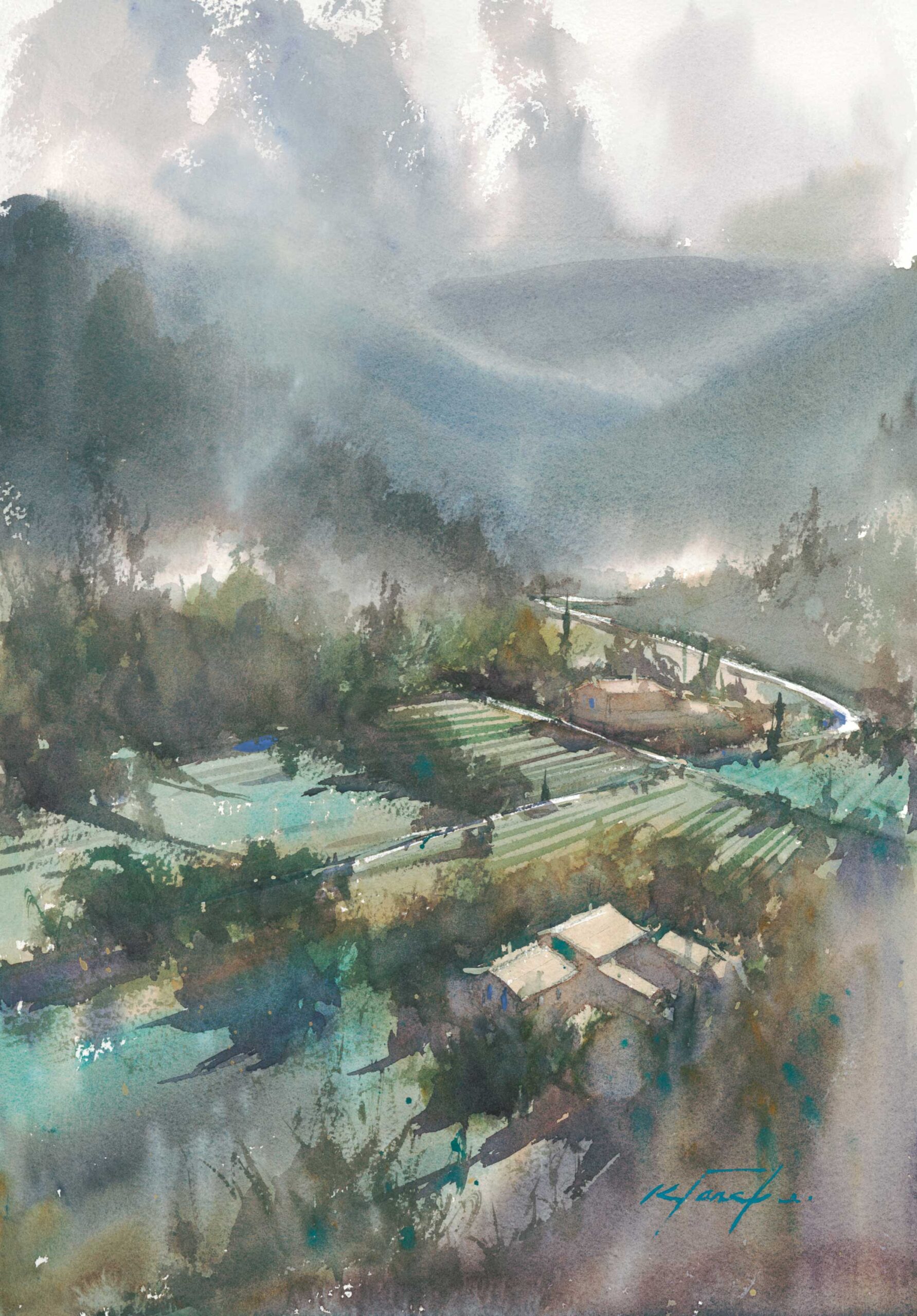
Kane: You’ve traveled a lot. What do you think painting in a variety of locations has done for your work?
Tanabe: In each place, the color and light conditions are all a little different. As a plein air painter, it’s great training to be able to work in different conditions. I get stronger as a painter that way.
And, of course, I’ve been interested in different cultures all my life; I’d made an entire career out of it. It’s nice to have new experiences. I try to live like a local when I travel, but sometimes it gets difficult. In the United States, I feel safe almost any place I go, and I can almost always find other painters who will go out with me. But in some places, you really have to worry about your safety.
Kane: You obviously have a lot of experience packing supplies for a variety of different painting situations. What advice would you give to an artist who wants to try plein air for the first time about what to pack, so they’re not taking too much, but have what they need in the field?
Tanabe: I always tell students who sign up for my plein air workshops to pack all their gear into their backpack before the workshop begins, walk around their neighborhood, and then find a place to paint. They don’t actually have to make a painting, but I want them to set up and see how long it takes. If it takes longer than five minutes, I tell them they’re taking too much.
Kane: How would you describe the perfect day to plein air paint?
Tanabe: A few clouds, a blue sky, some changing light. And I like springtime — the white flowers and the variety of color. Summers can be very brown, so spring is an exciting time for me.
Kane: What do you look for in a subject?
Tanabe: What often triggers me to paint is not really the subject itself; it’s an interesting pattern of light and dark, a subtle contrast, a reflection. As a landscape artist, I also strive to capture a sense of time and place. Especially when I’m on location, I feel the place in all of my senses. I feel connected, as if I’m part of the scene. I don’t think I choose a subject; rather, it chooses me. I just have to be paying attention when it does. I think my painting is a mere response to that.
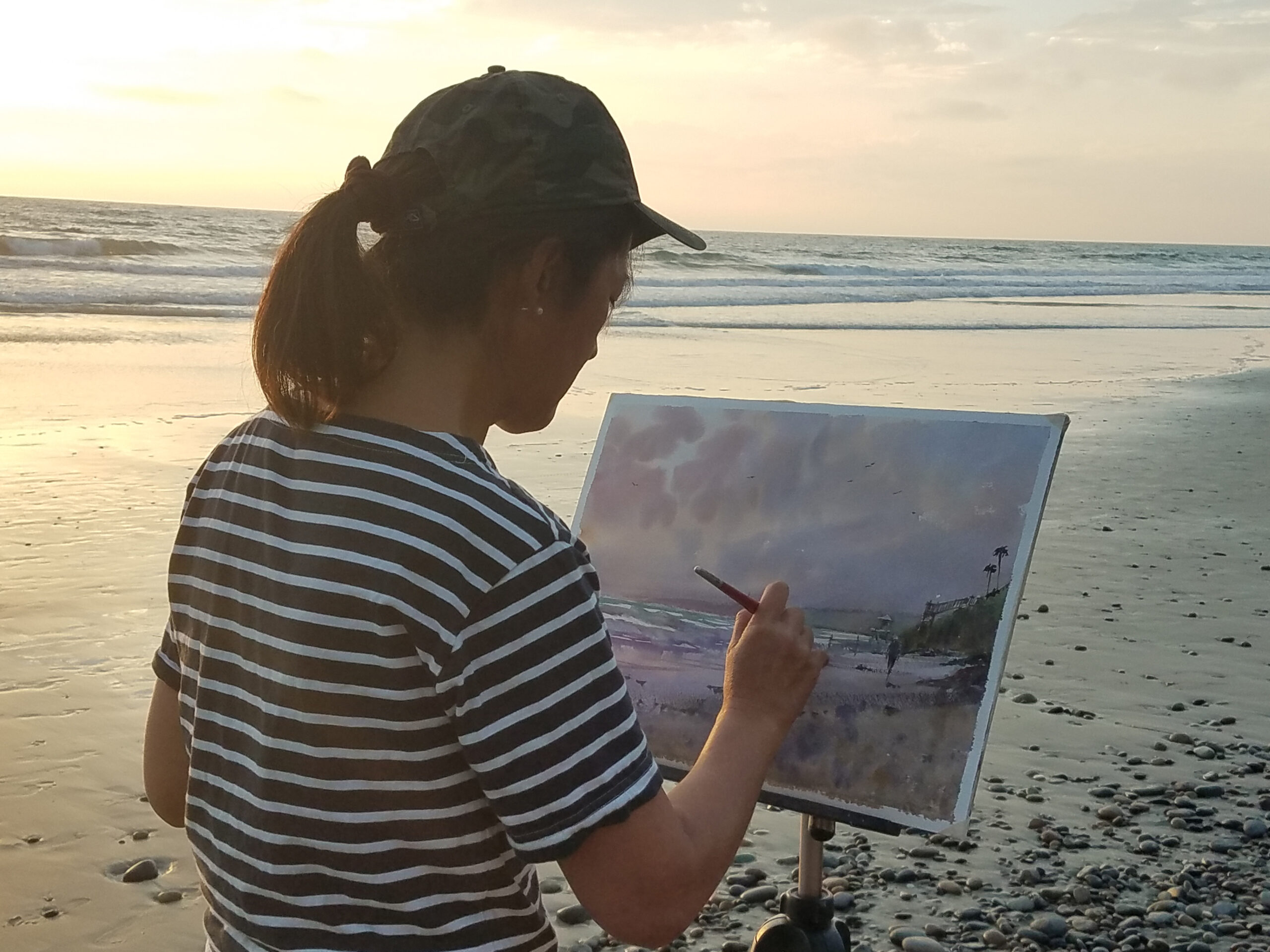
Keiko Tanabe will help you overcome any obstacles to painting outdoors with watercolor ~ start with her art video workshop “Painting Sunlight,” available here.



